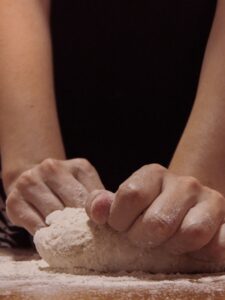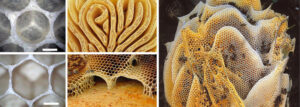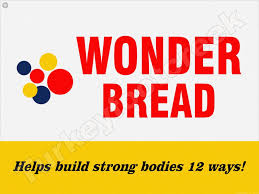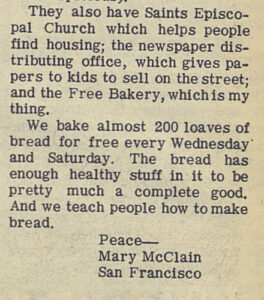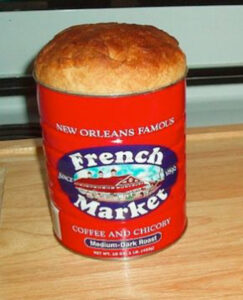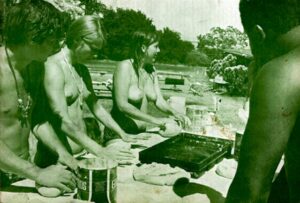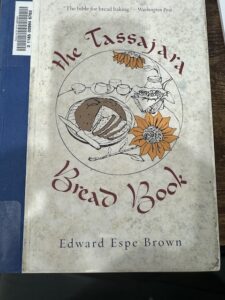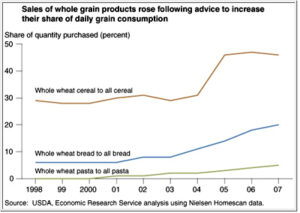Should I eat bread?
The low carbohydrate movement has demonized bread. But is bread fattening? Does it cause inflammation? And if so, why do we call bread the Staff of Life?
The Staff of Life
Imagine calling white bread the staff of life. And yet bread is more responsible for humans ending a nomadic existence. The cultivation of wheat and barley, both in the Nile and in the Euphrates/Tigris rivers, led to civilization.
Calendars, Art, Religion
Not having to forage meant there was time to build a more permanent shelter. It also meant a steady supply of food.
This also meant a calendar was needed because when is the optimal time to plant?
The calendar helped predict when the rivers would swell and recede. The bottom land, with its rich topsoil, is ideal for growing crops.
When you don’t need to spend time looking for food, you have time to develop other things:
- Make a religion around grains – the god of the weather, of the earth of the river
- Grain can become the first currency, facilitating trade
- Art because you spend less time seeking food
- Storage systems to overcome times of famine.
- Mathematics, weights, and measures are needed to buy and sell grain
- Writing to make contracts and facilitate trade of the grain
- A government is needed to settle disputes
Storage Systems
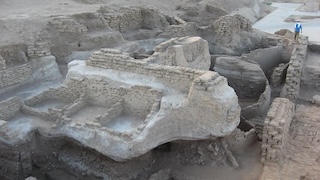
Excavation area at Tell Edfu shows superimposed settlement layers dating to various phases, with some silos of the 17th Dynasty (ca. 1650-1520 BC) covered by a thick ash layer on top into which several storage compartments were built.
Harvested grain can be stored. Storing grain in Egypt was easier because of the dry climate. Joseph, of the Hebrew Bible, prophesied to the Pharoh of an upcoming famine. As a result, the Pharoh built silos and stored a portion of each harvest. Seven years later, the harvest failed. But
The silo system was complex. Filling from the top and arranged in a way that winds would keep the grains cool. Where did Egyptians get the idea for such an invention? From bees. You can see the bees’ natural ventilation system here:
Bees were the symbol of royalty in ancient Egypt. Their honey was tears from the sun god. Bee architecture was copied for the ventilation system for the silos storing grain. Thus, the storage of grain allowed society to thrive during the time of famine.
Bronze Age to Iron Age
Bread was portable. Served as currency. Allowed armies to march. Facilitated trade between city states. The grain rich regions of the Nile produced grain traded with Mycennians for olive oil and wine.
The Roman emperors gave bread to the poor as welfare. Part of the bread and circus program to keep Romans happy. Bread was imported to Rome, and ultimately, Roman citizens were given “their daily bread.”
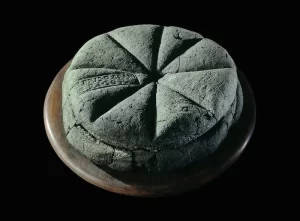
Preserved after the destruction of Pompeii – this bread might be a bit over cooked.This bread from Pompeii is now located at Museo Archeologico Nazionale, Naples.
Rome fell, but bread continued to be important.
Bread until 1920
Grains, including bread, were the major source of calories for most of Europe. From the fall of Rome through the Middle Ages, bread was the main source of calories, along with other grain products.
Bread in the Industrial Age
White bread was considered pure, hygienic, the whiter the better. Brown bread could be contaminated. The ability of mills to separate wheat from chaff, and to make bread without a human hand touching it was irresistible. Industrial bread slicing resulted in “best thing since sliced bread.”
White bread became the preferred style of bread from the 1920s until 2009.
Fortification of bread with vitamins in the 1940s made bread a health food. Pellagra (vitamin B 3 deficiency) and beriberi (thiamine deficiency) had sadly become common in the US and were eliminated by fortification. So it was indeed revolutionary, but calling it a health food? Even the Federal Trade Commission had issues with this “12 ways campaign” and sued Wonder Bread. The Feds lost.
Age of Aquarius Beats Bread
In spite of the world loving white bread, with baby boomers and Gen X growing up on it, there was rebellion. Health guru Adele Davis, who sold millions of health books, decried bread for its lack of fiber and urged people to make whole wheat bread at home.
But then came the hippies and the summer of love. Hundreds of kids were flocking to San Francisco without jobs, without money, and hungry. Feeding these young adults became a group priority.
In 1967, came one Walt Reynolds, who brought 400 pounds of flour and baked bread twice a week to feed these kids. They didn’t have enough bread trays so they used coffee cans.
Walt insisted on using whole wheat bread, something rare in those days. But this became part of the counter-culture. Make your own bread. Make it healthy. It became their own bread, their own symbol.
We don’t know what happened to Walt Reynolds after this – he lives, changed the way a generation looked at bread, and then disappeared.
Atkins and Bread
The low carb movement of the 1970’s meant bread sales went declined. They recovered a bit, but in the second Atkins revolution, bread sales were down in some bakeries by 40%. Today Atkins Corporation sells bread.
But How to Make It
While there were lots of recipes to make bread from Digger Bread, as seen above, home cooks wondered. Then came along another baker who made the bread everyone dreamed of. From the baker of the Zen Retreat – we have this book.
In 2009 whole wheat bread surpassed white bread as the major bread sold over time. With fiber at the core all whole wheat products have increased.
And we can say for certain—yes, you can buy bread—but buy or make your own. Today, I can walk to a local baker who makes whole-grain sourdough bread.

